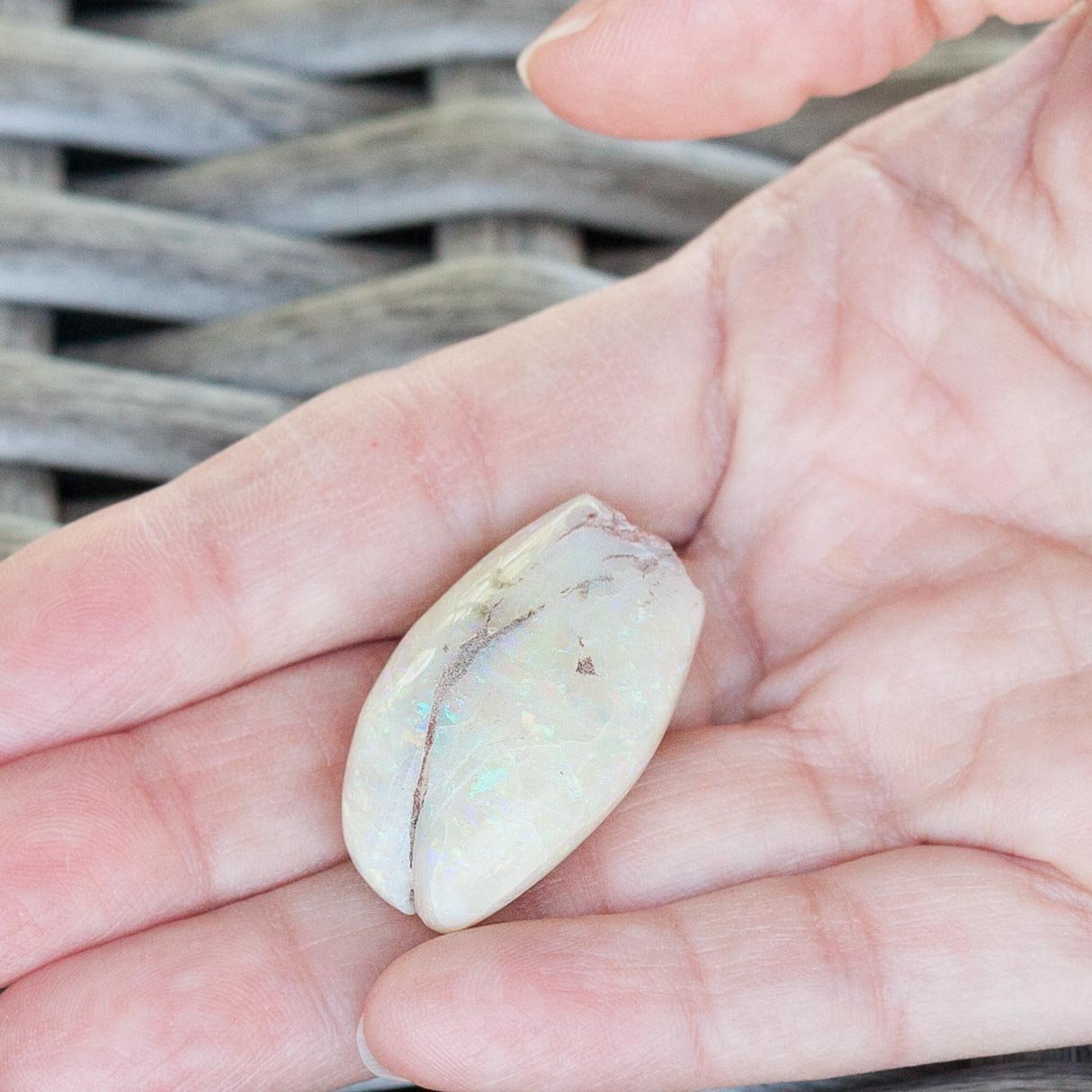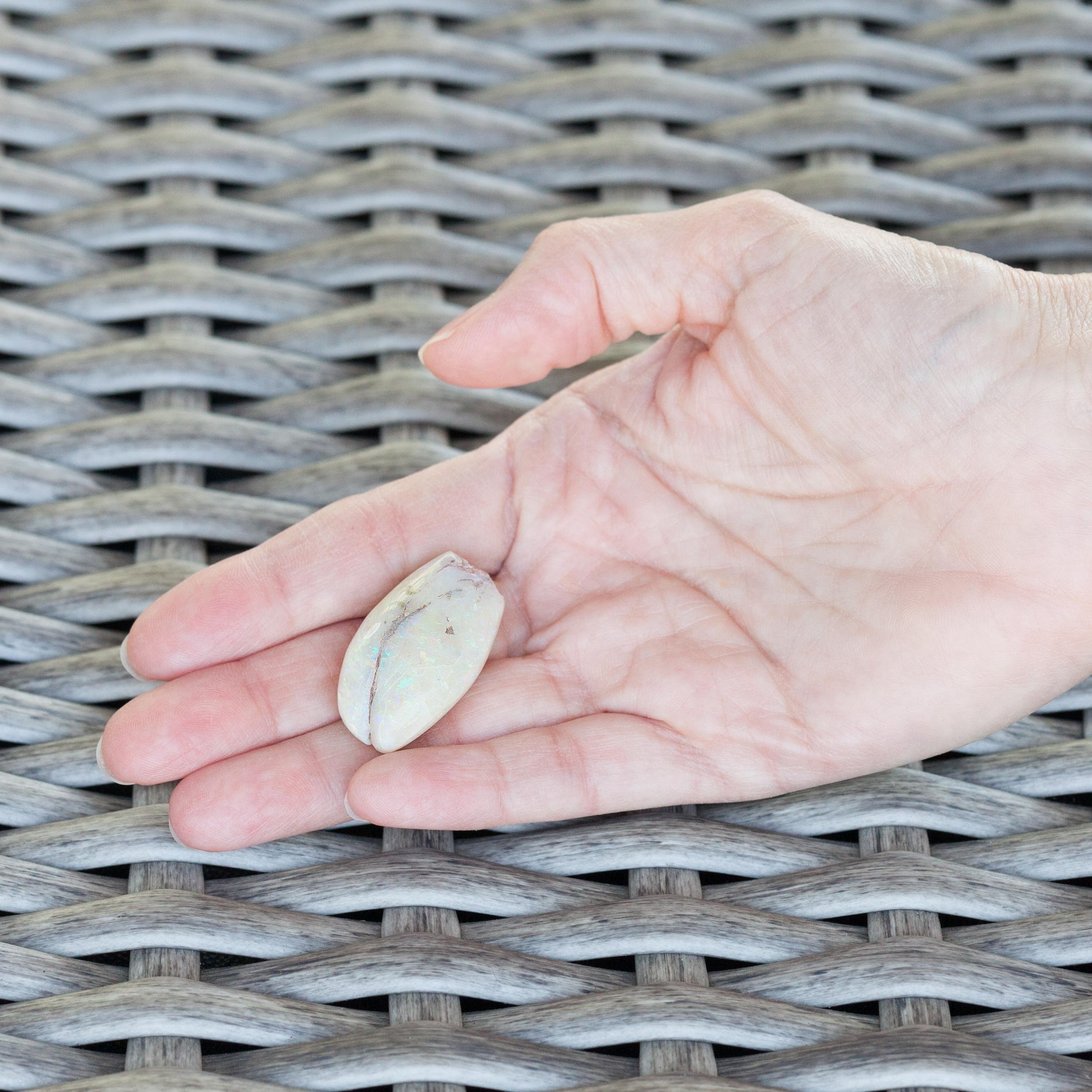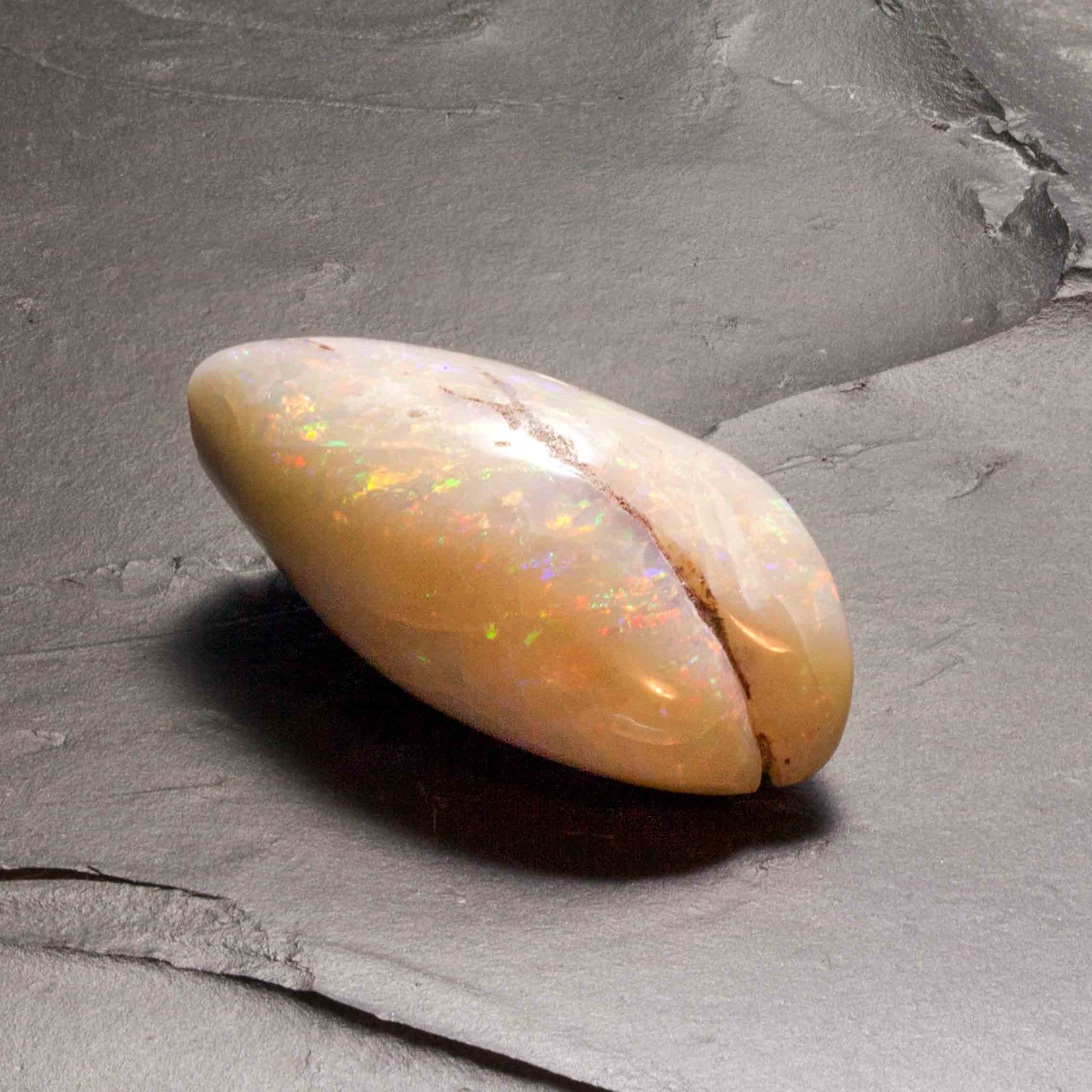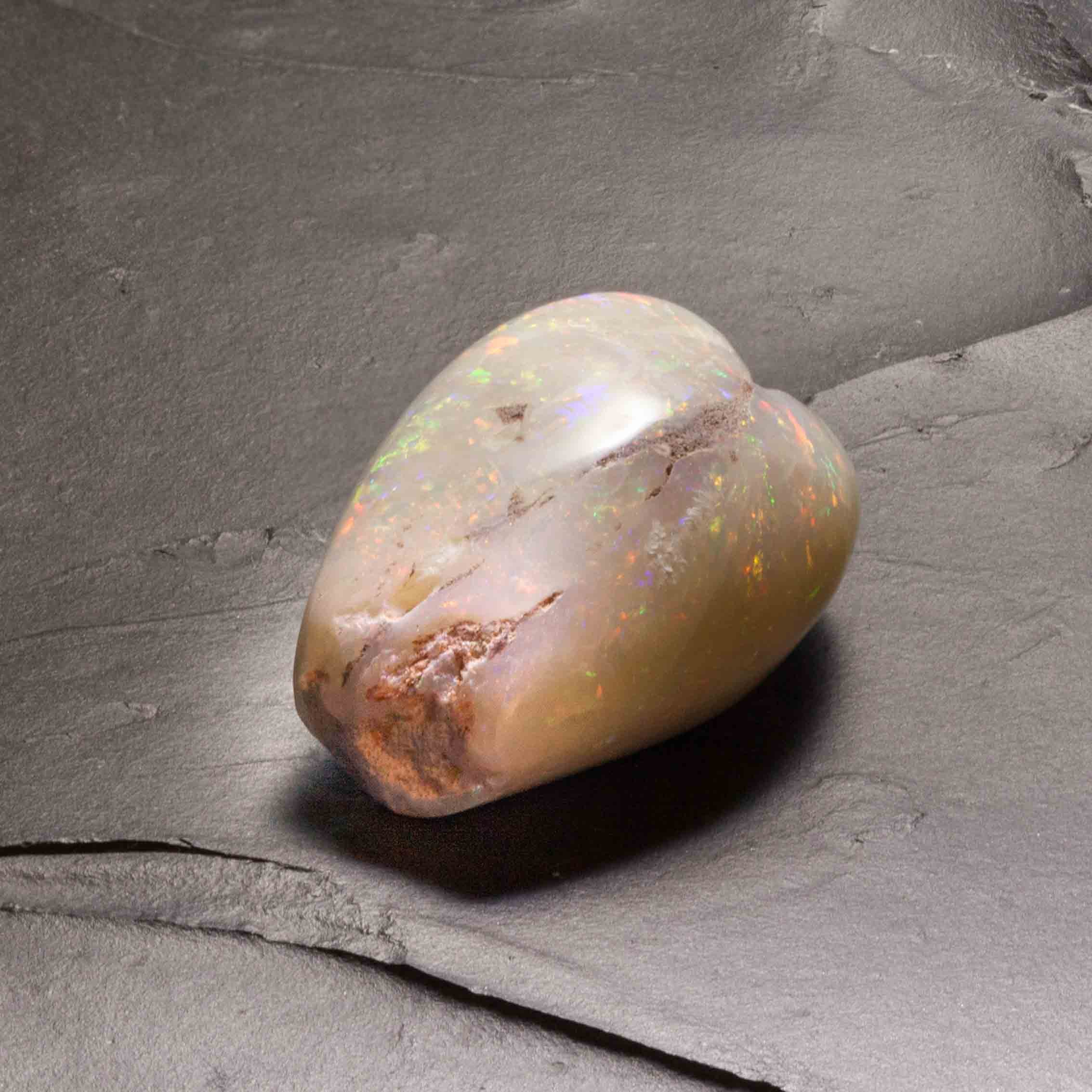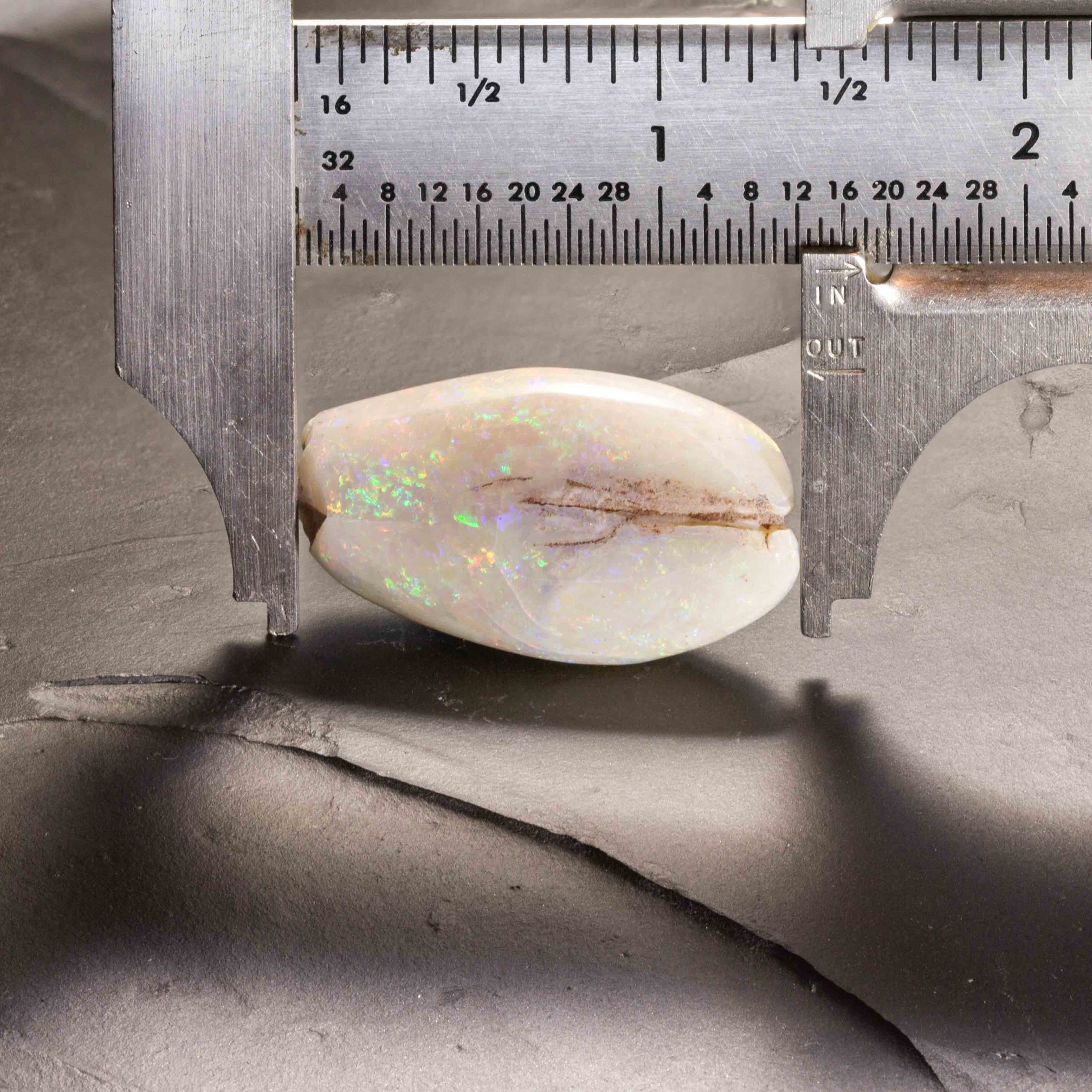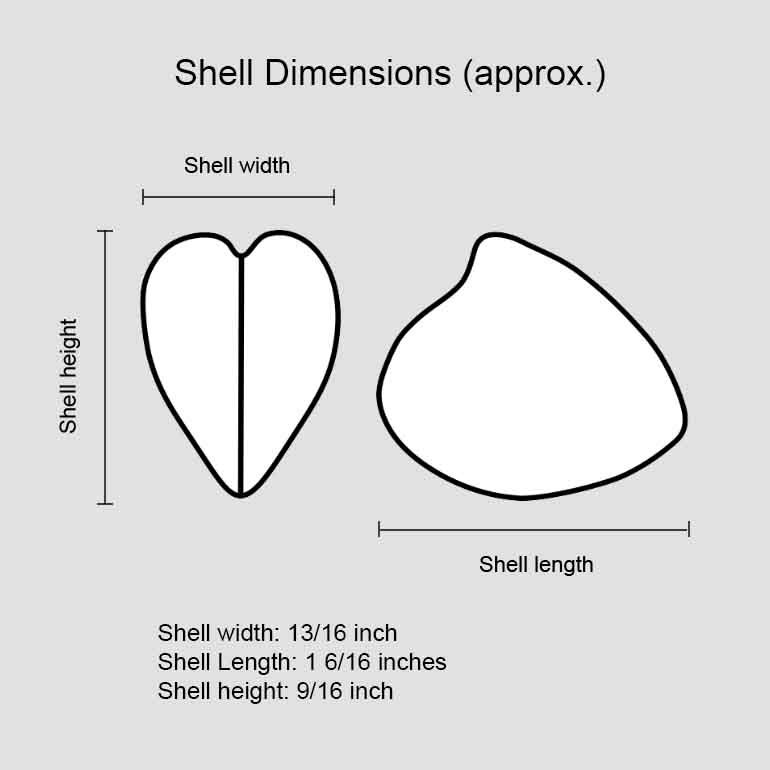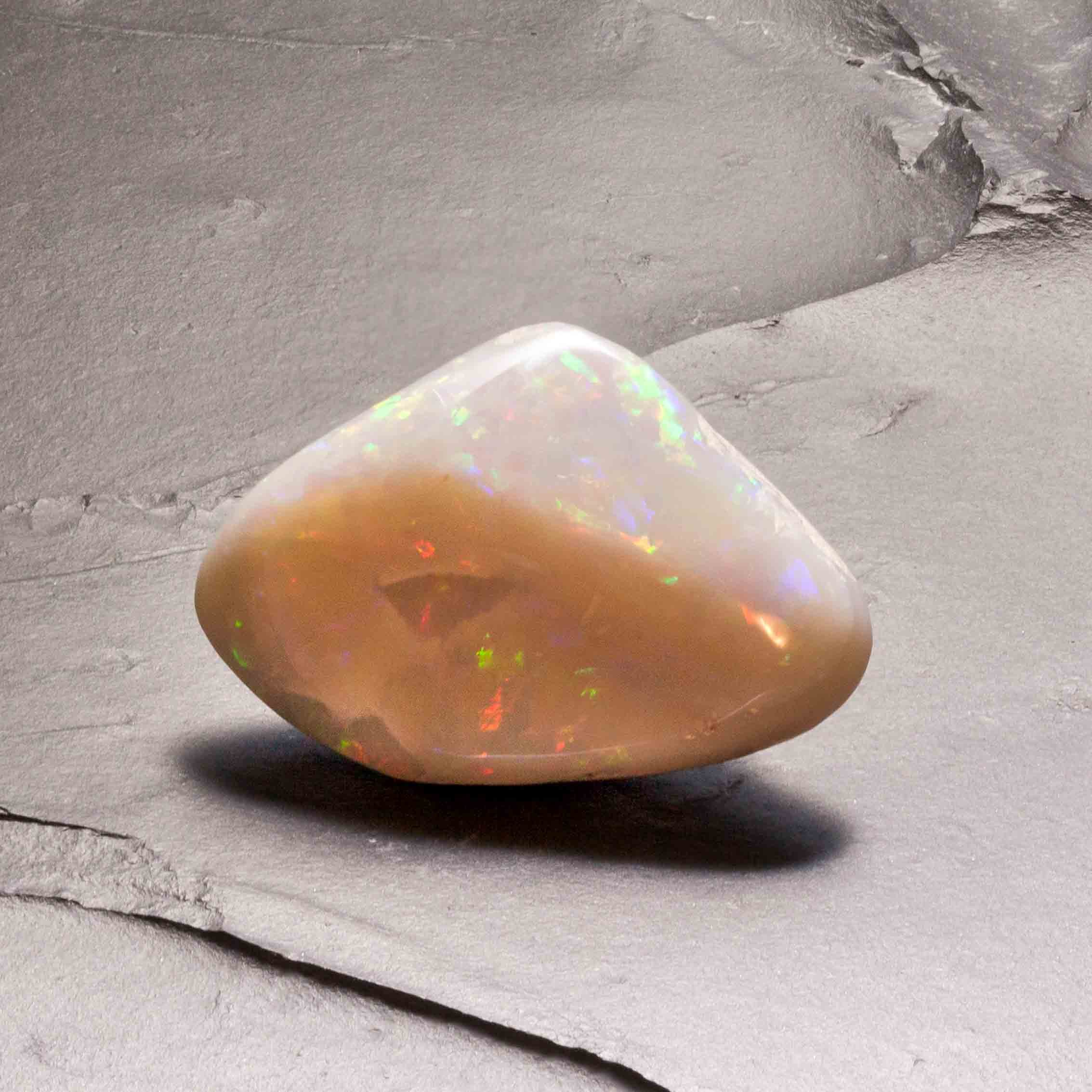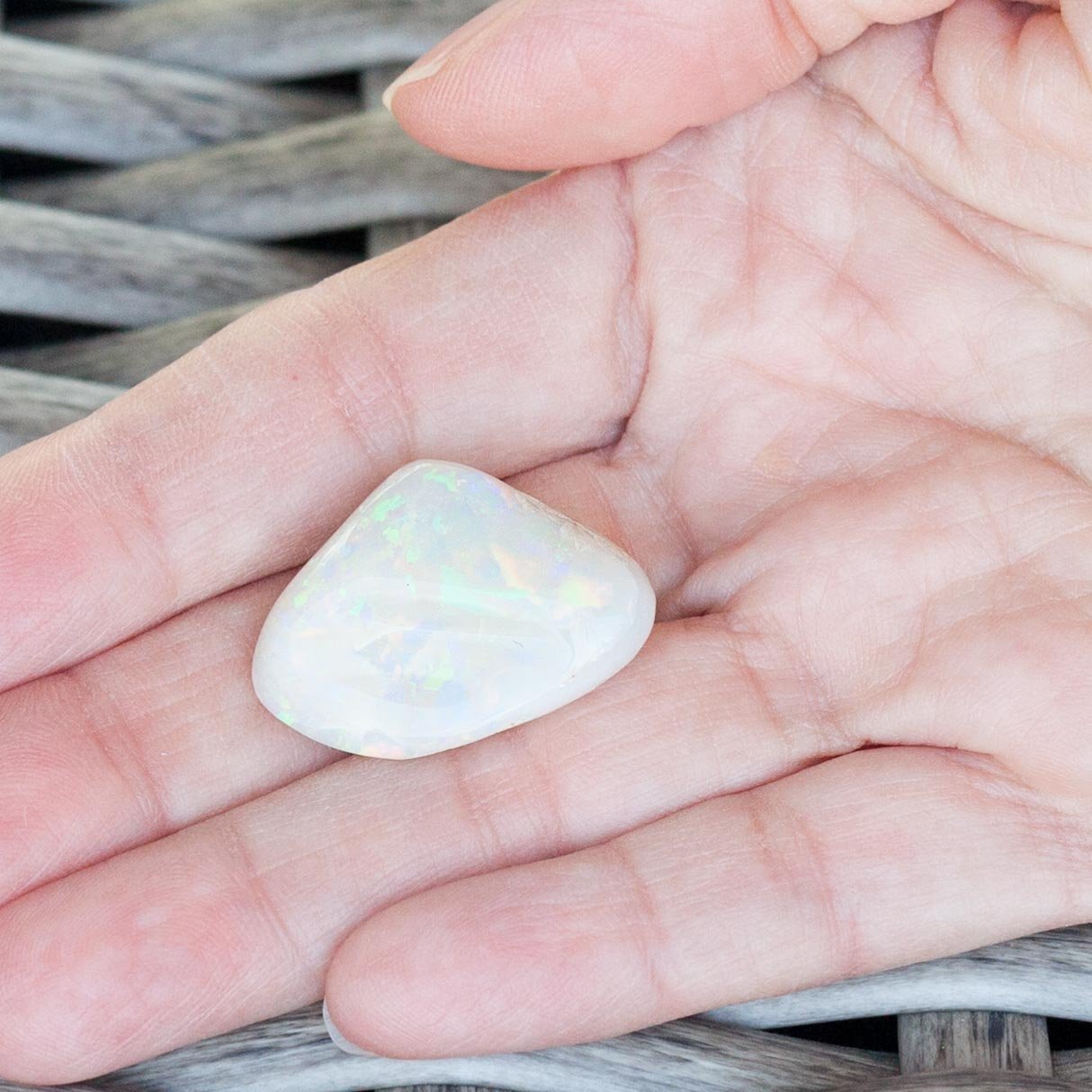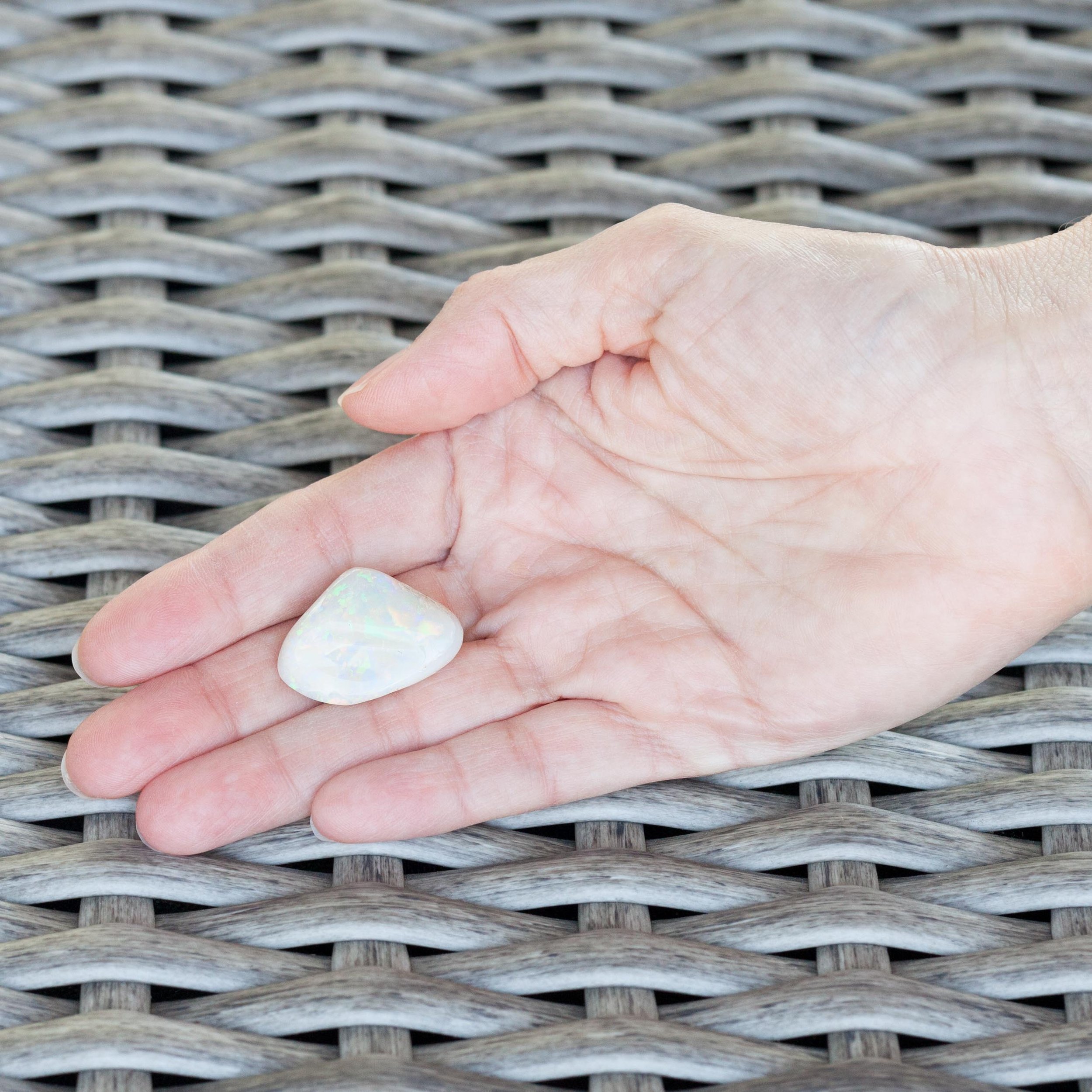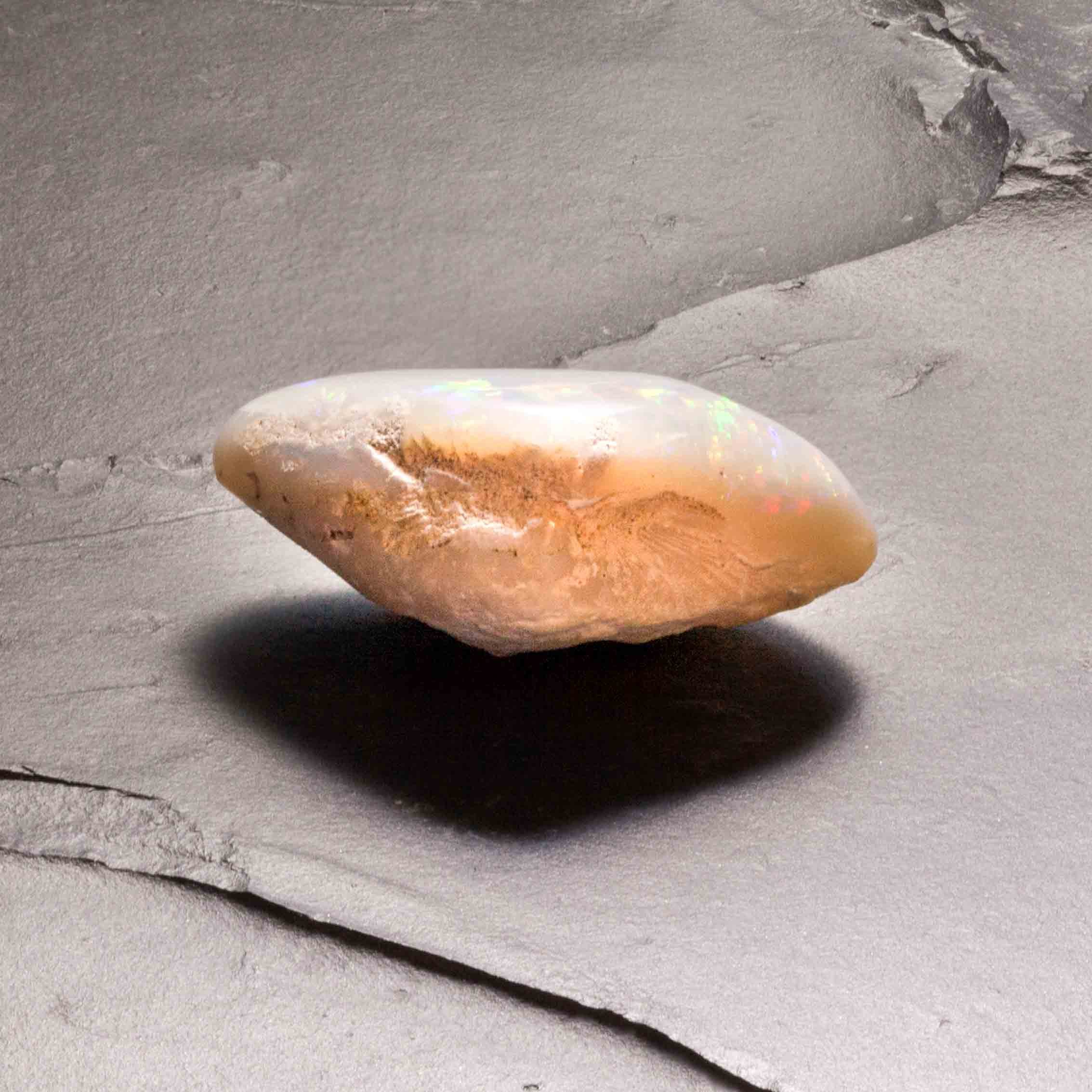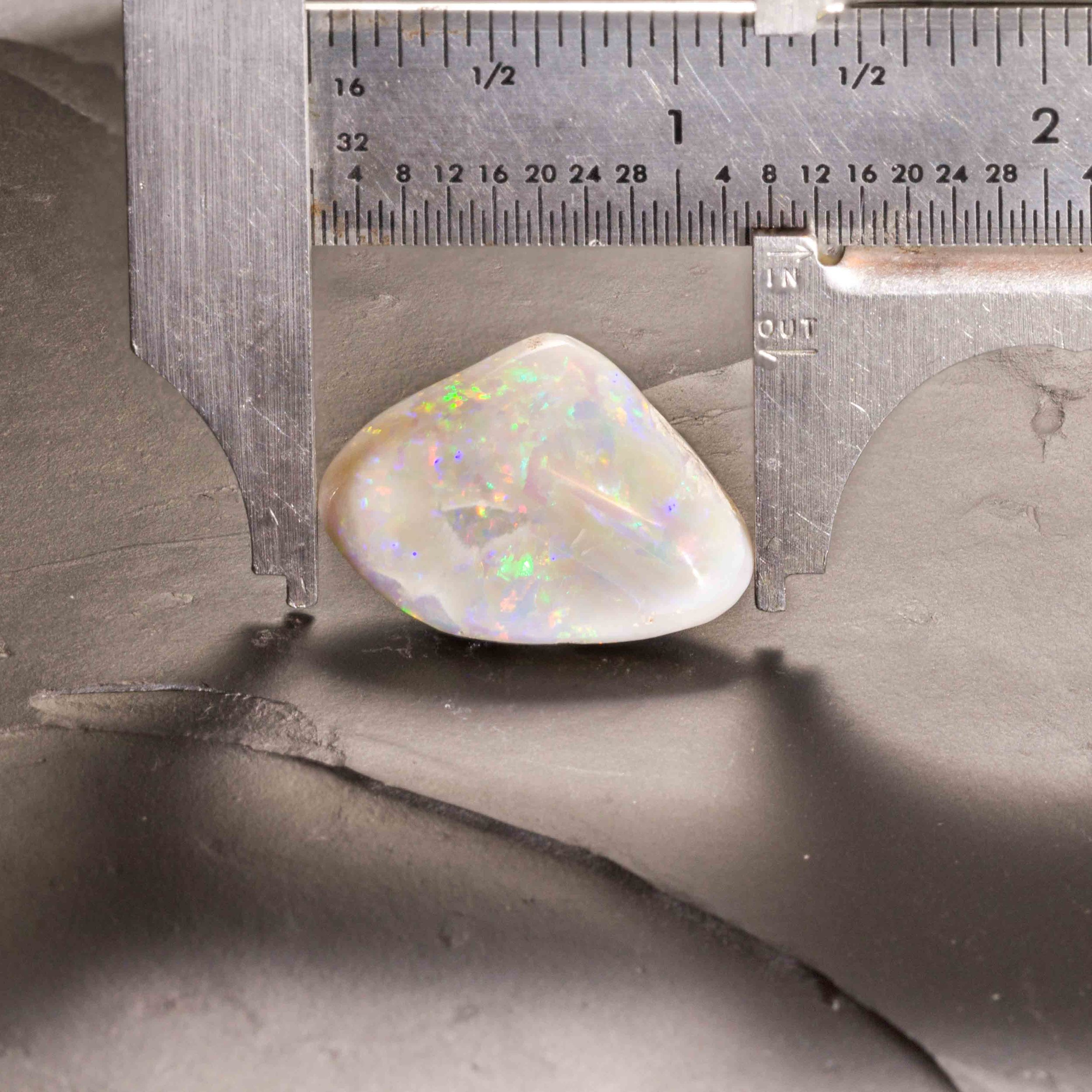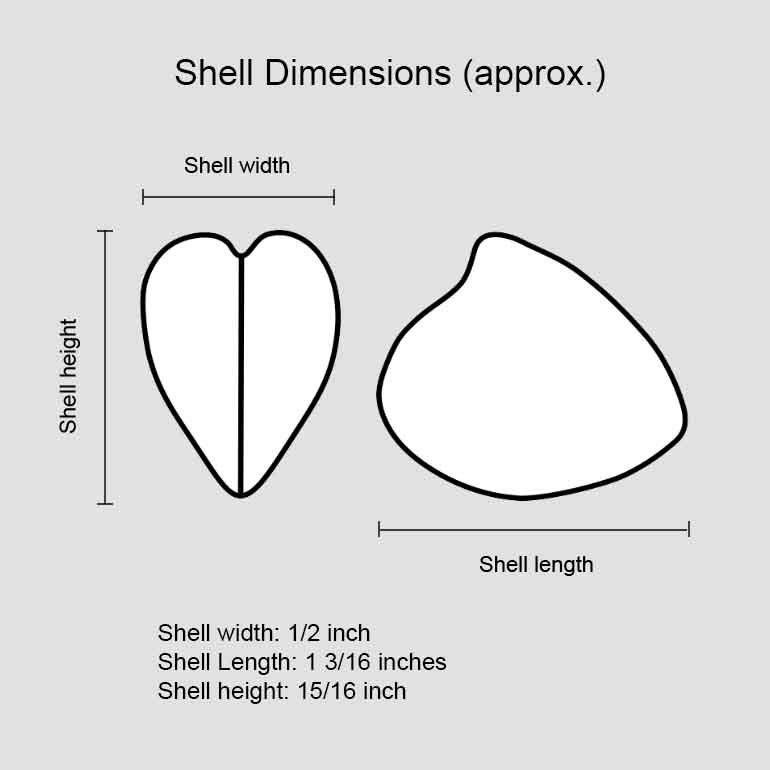Opal Bivalve - Mollusk
Vendor: Fossil Soup
SKU Number: SQ4561354
Located in South Australia, this specimen is an opalized bivalve from the 100 million year old Cretaceous marine environment of the world famous Coober Pedy opal field. This specimen exhibits elongated valves with a clear line separating the two halves of the shell. These fossils are almost always lightly polished to showcase the amazing spectrum of color that Coober Pedy opal is known for. The weight of this piece is approximately 12 grams.
Full dimensions are listed below.
Vendor: Fossil Soup
SKU Number: SQ4561354
Located in South Australia, this specimen is an opalized bivalve from the 100 million year old Cretaceous marine environment of the world famous Coober Pedy opal field. This specimen exhibits elongated valves with a clear line separating the two halves of the shell. These fossils are almost always lightly polished to showcase the amazing spectrum of color that Coober Pedy opal is known for. The weight of this piece is approximately 12 grams.
Full dimensions are listed below.
Vendor: Fossil Soup
SKU Number: SQ4561354
Located in South Australia, this specimen is an opalized bivalve from the 100 million year old Cretaceous marine environment of the world famous Coober Pedy opal field. This specimen exhibits elongated valves with a clear line separating the two halves of the shell. These fossils are almost always lightly polished to showcase the amazing spectrum of color that Coober Pedy opal is known for. The weight of this piece is approximately 12 grams.
Full dimensions are listed below.
Additional Information
Australia produces about 80% of the world's supply of opal. Most of it comes from the Cretaceous deposits that formed from the inland sea that covered roughly a third of the eastern part of the continent.
Coober Pedy, to the west of the inland sea represents a marine environment with spectacular opals replacing mollusks. To the east of the continent, Lightning Ridge has produced incredible fossils of terrestrial animals.


